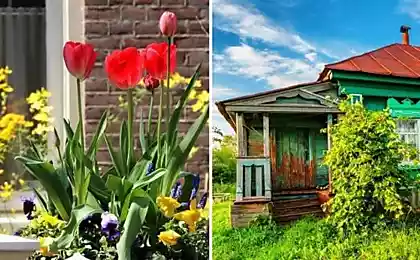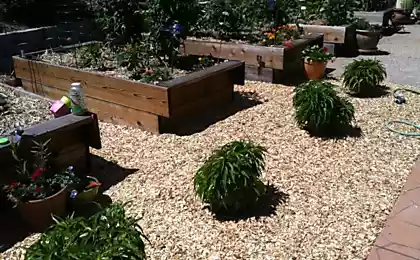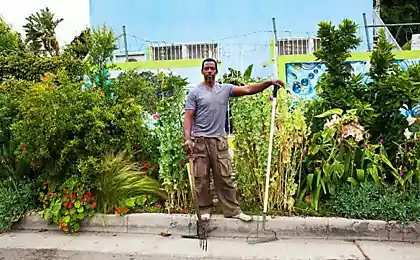229
How to double your crop in a small area
During planting season and harvesting Advice of experienced gardeners for weight in gold. Grandfather Athanasius, our neighbor and an old friend of my father, is such a man. He has everything growing in his garden.
Yesterday they came to visit him for advice, and he immediately from the door and says: “It is not difficult to achieve success on a small plot of land. During the summer, I collect 200 kg of tomatoes from my plot of 9 acres. How about that? His experience in gardening has helped many of my friends. harvest Even from a tiny precinct!

Advice of experienced gardeners Today editorial "Site" will tell you how double on a small plot. Minimum effort with maximum impact!
“The composition of the soil is important: it primarily depends on whether the harvest will be good!” – Athanasius’ grandfather began to share his advice. The thicker the layer of loose and rich in organic soil, the more favorable the conditions for the development of plant roots.
The amount of nutrients depends on the size root. As a result, intensive and productive development of the upper parts of plants.
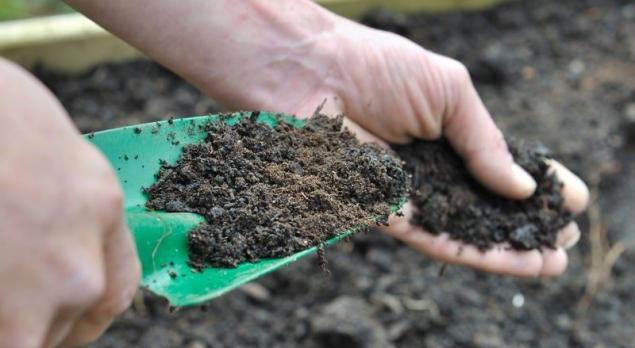
At all, it is not necessary to allocate half of the country plot for a traditional garden, when you can resort to non-standard agricultural techniques. For example, flatbed They take up much less space, and the yield on them is often higher.
“This is how I grow cucumbers, peas, melons, pumpkins and even tomatoes. As a support I use trellises, supports and grilles! – continued to share advice wise grandfather.
With help. verticalization Time spent on crop care and harvesting is reduced. On such plants that grow vertically, it is better to see ripe fruits. Due to the fact that the plants are slightly raised above the soil, they are less likely to be affected by fungal diseases, because the air spreads between the leaves quite freely.

But the author of the best-selling book on horticultural affairs Mel Bartholomew just begs all beginner summer residents to pay attention to square-landing.
In order to make a small area of the garden plot convenient and comfortable for care, it divides each bed, the length and width of which is 1.2 meters, into 15 squares with an area of 30 by 30 centimeters. So you can plant different cultures on each square. For example, plant 4 heads of head salad, or 9 seedlings of bush beans, or 16 seedlings of radish.
Mel Bartholomew believes that reducing the area for seedlings saves about 80% of irrigation water, as well as 80% of labor and 80% of fertilizers. There is no doubt common sense in this!
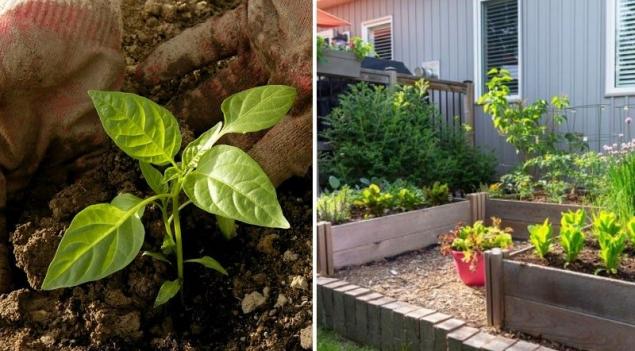
Tips on what to plant in a small plot "What is better to plant in a small summer cottage?" - I asked an experienced gardener. He smiled and said, “Grow what you like to eat.” There is no point in taking the place of useful, but not necessary cultures.
And you can also plant vegetable varieties that are expensive in stores. So not only will you enjoy watching the growth of the plant, but also save a penny. Also plant peas, onions, radishes: they do not take up much space, and they can be used for a long time.”
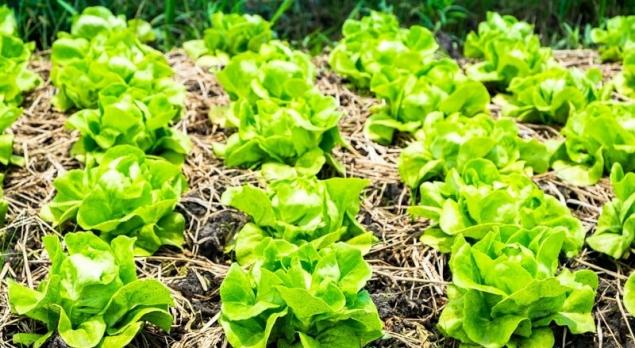
But his wife Baba Clava added that you can still try to grow what you can not buy in supermarkets. So she surprises and indulges in rare vegetables and greens grandchildren who come to stay for the summer in the village.
By the way, vegetables on small plots It is combined with flower crops and fruit trees.

High beds give very good results, however, this is not an option for the lazy. An increase in the depth of the fertile layer of the earth can be achieved if the beds are dug twice to double depth. Thus, a large lush bed with a loose layer of earth will emerge, which will reach a depth of 50-60 centimeters and rise above its surface by 7-24 centimeters.
Here it is all about the shadow, which is obtained from closely planted plants on high beds. The cast shadow suppresses the growth of weeds. As a result, weeding takes less time. Higher beds simplify watering and harvest.

The yield you can get will be four times higher than usual, and the need for processing next time will be minimal!

Tips for planting plants “If the climate of your region allows, start and finish the summer season a week earlier and later!” – said the grandfather Athanasius. The first plants can be planted in greenhouses or under polyethylene shelters with preheated soil (infrared lamps to help). You can use the same method to extend the season.

Summer's editorial board is just around the corner. Soon there will be a beautiful time when the day is long, the weather is excellent and you do not want to leave the street. And all this is great, if not for one thing. Mosquitoes. Intrusive and buzzing mosquitoes can spoil even the most cozy gatherings on the street.
I suggest you read the list of plants that drive mosquitoes away from the site. These are just the best plants to give!

I am sure that these tips of experienced gardeners will be useful to many. landlords. Boldly apply them in practice, and in the near future, with warming, of course, you will see the result of your work.
And another one. tip-off Afanasia: Remember that the dacha is not only about work and the hassle of caring for plants, the dacha is, first of all, a place where you can and should relax and enjoy. Enjoy the beautiful fragrant flowers on the flowerbed, enjoy the fruits of the first harvest, walk on the grass with bare feet and smile at the sun. Nature and plants are so beautiful!
Yesterday they came to visit him for advice, and he immediately from the door and says: “It is not difficult to achieve success on a small plot of land. During the summer, I collect 200 kg of tomatoes from my plot of 9 acres. How about that? His experience in gardening has helped many of my friends. harvest Even from a tiny precinct!

Advice of experienced gardeners Today editorial "Site" will tell you how double on a small plot. Minimum effort with maximum impact!
“The composition of the soil is important: it primarily depends on whether the harvest will be good!” – Athanasius’ grandfather began to share his advice. The thicker the layer of loose and rich in organic soil, the more favorable the conditions for the development of plant roots.
The amount of nutrients depends on the size root. As a result, intensive and productive development of the upper parts of plants.

At all, it is not necessary to allocate half of the country plot for a traditional garden, when you can resort to non-standard agricultural techniques. For example, flatbed They take up much less space, and the yield on them is often higher.
“This is how I grow cucumbers, peas, melons, pumpkins and even tomatoes. As a support I use trellises, supports and grilles! – continued to share advice wise grandfather.
With help. verticalization Time spent on crop care and harvesting is reduced. On such plants that grow vertically, it is better to see ripe fruits. Due to the fact that the plants are slightly raised above the soil, they are less likely to be affected by fungal diseases, because the air spreads between the leaves quite freely.

But the author of the best-selling book on horticultural affairs Mel Bartholomew just begs all beginner summer residents to pay attention to square-landing.
In order to make a small area of the garden plot convenient and comfortable for care, it divides each bed, the length and width of which is 1.2 meters, into 15 squares with an area of 30 by 30 centimeters. So you can plant different cultures on each square. For example, plant 4 heads of head salad, or 9 seedlings of bush beans, or 16 seedlings of radish.
Mel Bartholomew believes that reducing the area for seedlings saves about 80% of irrigation water, as well as 80% of labor and 80% of fertilizers. There is no doubt common sense in this!

Tips on what to plant in a small plot "What is better to plant in a small summer cottage?" - I asked an experienced gardener. He smiled and said, “Grow what you like to eat.” There is no point in taking the place of useful, but not necessary cultures.
And you can also plant vegetable varieties that are expensive in stores. So not only will you enjoy watching the growth of the plant, but also save a penny. Also plant peas, onions, radishes: they do not take up much space, and they can be used for a long time.”

But his wife Baba Clava added that you can still try to grow what you can not buy in supermarkets. So she surprises and indulges in rare vegetables and greens grandchildren who come to stay for the summer in the village.
By the way, vegetables on small plots It is combined with flower crops and fruit trees.

High beds give very good results, however, this is not an option for the lazy. An increase in the depth of the fertile layer of the earth can be achieved if the beds are dug twice to double depth. Thus, a large lush bed with a loose layer of earth will emerge, which will reach a depth of 50-60 centimeters and rise above its surface by 7-24 centimeters.
Here it is all about the shadow, which is obtained from closely planted plants on high beds. The cast shadow suppresses the growth of weeds. As a result, weeding takes less time. Higher beds simplify watering and harvest.

The yield you can get will be four times higher than usual, and the need for processing next time will be minimal!

Tips for planting plants “If the climate of your region allows, start and finish the summer season a week earlier and later!” – said the grandfather Athanasius. The first plants can be planted in greenhouses or under polyethylene shelters with preheated soil (infrared lamps to help). You can use the same method to extend the season.

Summer's editorial board is just around the corner. Soon there will be a beautiful time when the day is long, the weather is excellent and you do not want to leave the street. And all this is great, if not for one thing. Mosquitoes. Intrusive and buzzing mosquitoes can spoil even the most cozy gatherings on the street.
I suggest you read the list of plants that drive mosquitoes away from the site. These are just the best plants to give!

I am sure that these tips of experienced gardeners will be useful to many. landlords. Boldly apply them in practice, and in the near future, with warming, of course, you will see the result of your work.
And another one. tip-off Afanasia: Remember that the dacha is not only about work and the hassle of caring for plants, the dacha is, first of all, a place where you can and should relax and enjoy. Enjoy the beautiful fragrant flowers on the flowerbed, enjoy the fruits of the first harvest, walk on the grass with bare feet and smile at the sun. Nature and plants are so beautiful!




